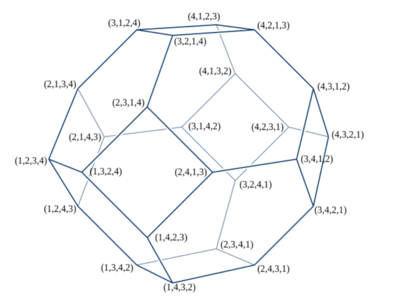Difference between revisions of "2022 AMC 10A Problems/Problem 21"
(→Solution) |
Mathboy282 (talk | contribs) (→See Also) |
||
| Line 39: | Line 39: | ||
== See Also == | == See Also == | ||
| − | {{AMC10 box|year=2022|ab=A|num-b= | + | {{AMC10 box|year=2022|ab=A|num-b=20|num-a=22}} |
{{MAA Notice}} | {{MAA Notice}} | ||
Revision as of 15:30, 12 November 2022
Contents
Problem
A bowl is formed by attaching four regular hexagons of side 1 to a square of side 1. The edges of adjacent hexagons coincide, as shown in the figure. What is the area of the octagon obtained by joining the top eight vertices of the four hexagons, situated on the rim of the bowl?
![]()
Solution
Note that the octagon is equiangular by symmetry, but it is not equilateral. ![]() of it's sides are shared with the hexagon's sides, so each of those sides have side length
of it's sides are shared with the hexagon's sides, so each of those sides have side length ![]() . However, the other
. However, the other ![]() sides are touching the triangles, so we wish to find the length of these sides.
sides are touching the triangles, so we wish to find the length of these sides.
Notice that when two adjacent hexagons meet at a side, their planes make the same dihedral angle at the bottom-most point of intersection and at the top-most point of intersection by symmetry. Therefore, the triangle that is wedged between the two hexagons has the same angle as the square at the bottom wedged between the hexagons. Thus, the triangle is a ![]() isosceles triangle.
This conclusion can also be reached by cutting the bottom square across a diagonal and noticing that each resulting triangle is congruent to each triangle wedged between the hexagons by symmetry.
Furthermore, notice that if you take a copy of this bowl and invert it and place it on top of this bowl, you will get a polyhedron with faces of hexagons and squares, a truncated octahedron, and therefore this triangle has a 90 degree angle:
isosceles triangle.
This conclusion can also be reached by cutting the bottom square across a diagonal and noticing that each resulting triangle is congruent to each triangle wedged between the hexagons by symmetry.
Furthermore, notice that if you take a copy of this bowl and invert it and place it on top of this bowl, you will get a polyhedron with faces of hexagons and squares, a truncated octahedron, and therefore this triangle has a 90 degree angle:
Now that we have come to this conclusion, by simple Pythagorean theorem, we have that the other ![]() sides of the octagon are
sides of the octagon are ![]() .
.
We can draw a square around the octagon so that the area of the octagon is the area of the square minus each corner triangle. The hypotenuse of these corner triangles are ![]() and they are
and they are ![]() triangles because the octagon is equiangular, so each has dimensions
triangles because the octagon is equiangular, so each has dimensions ![]() .
The side length of the square is
.
The side length of the square is ![]() for the larger sides of the octagon, and adding 2 of
for the larger sides of the octagon, and adding 2 of ![]() for each width of the triangle. Therefore, the area of the square is:
for each width of the triangle. Therefore, the area of the square is:
![]() The area of each triangle is
The area of each triangle is ![]() and there are
and there are ![]() of them, so we subtract
of them, so we subtract ![]() from the area of the square. The area of the octagon is thus
from the area of the square. The area of the octagon is thus ![]()
~KingRavi
Video Solution By ThePuzzlr
~ MathIsChess
Video Solution by OmegaLearn using Equiangular Hexagon Properties
~ pi_is_3.14
See Also
| 2022 AMC 10A (Problems • Answer Key • Resources) | ||
| Preceded by Problem 20 |
Followed by Problem 22 | |
| 1 • 2 • 3 • 4 • 5 • 6 • 7 • 8 • 9 • 10 • 11 • 12 • 13 • 14 • 15 • 16 • 17 • 18 • 19 • 20 • 21 • 22 • 23 • 24 • 25 | ||
| All AMC 10 Problems and Solutions | ||
The problems on this page are copyrighted by the Mathematical Association of America's American Mathematics Competitions. 











